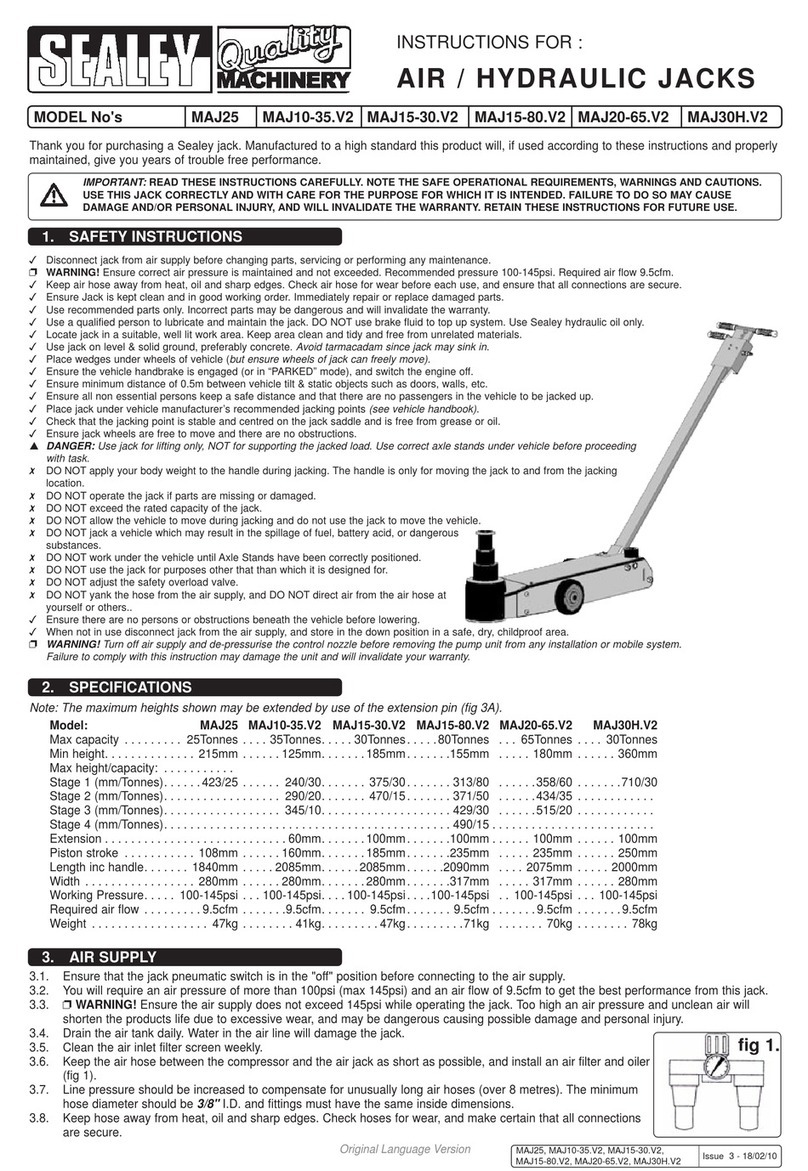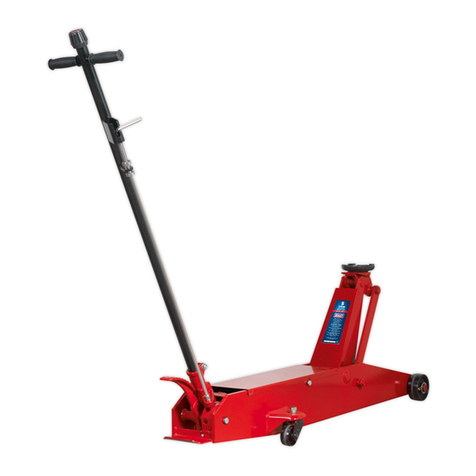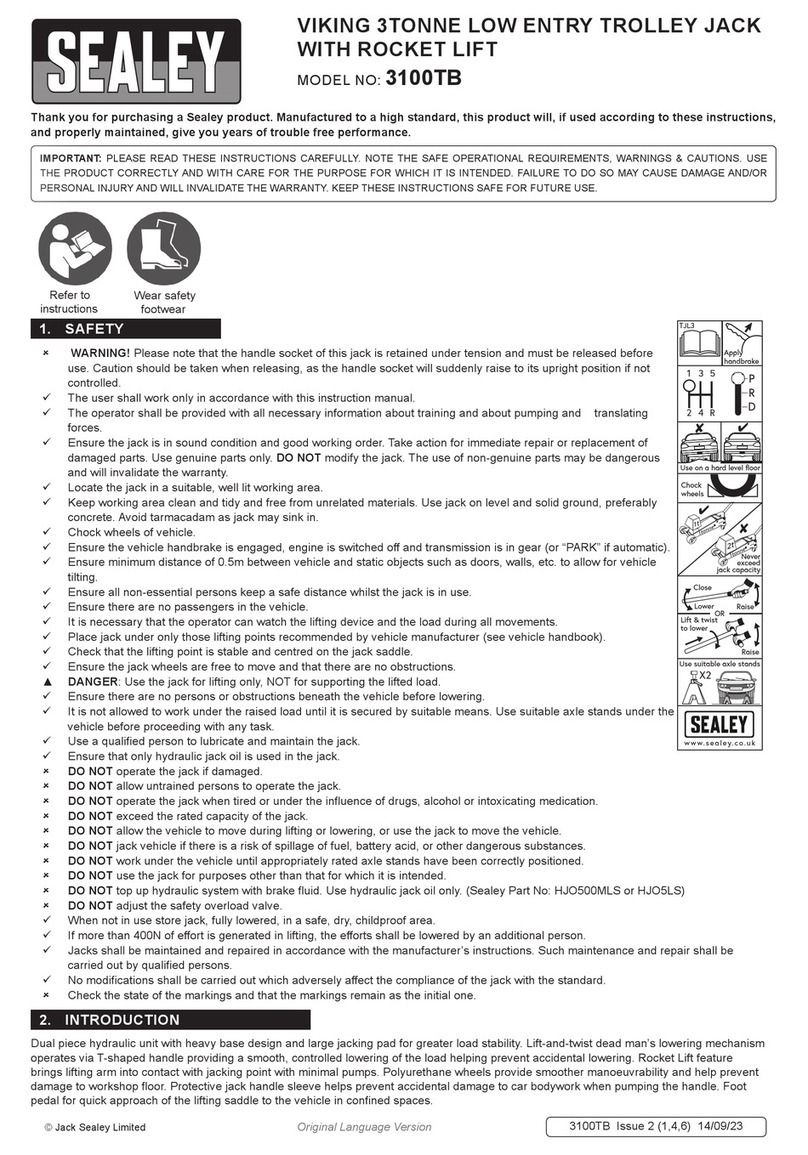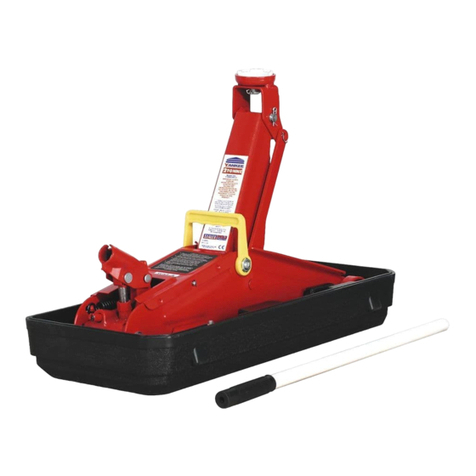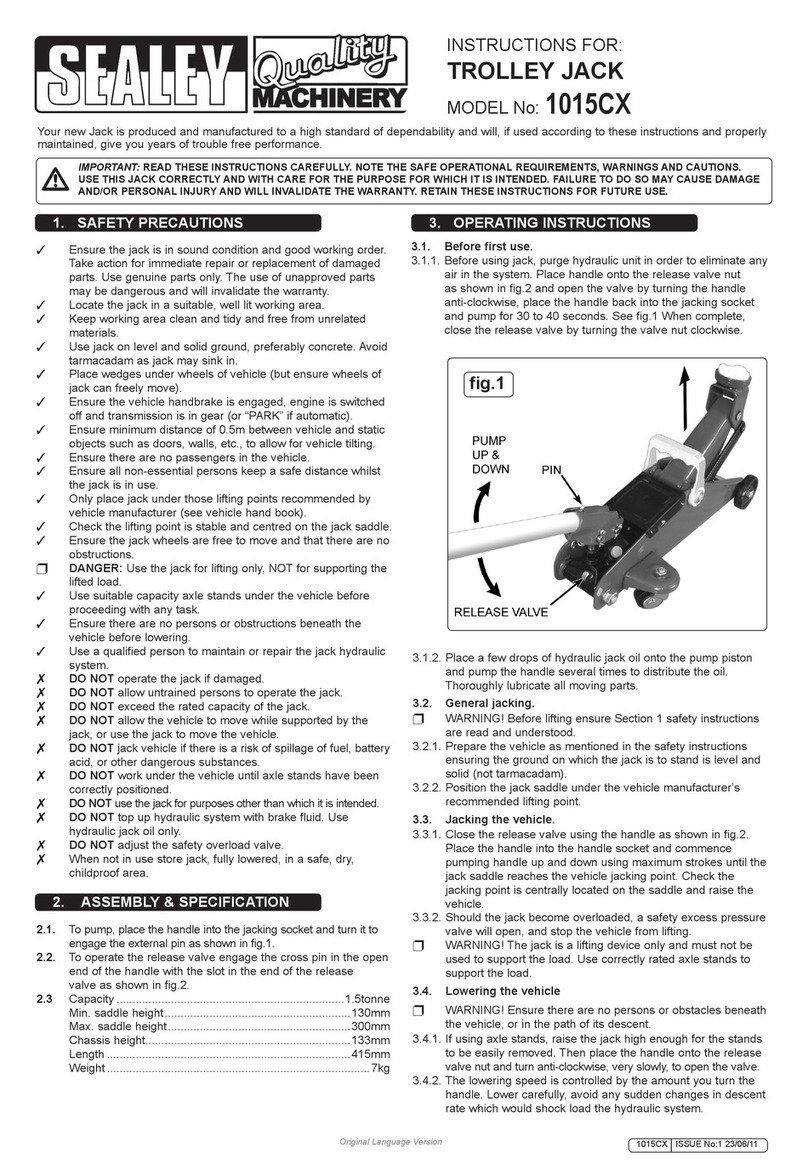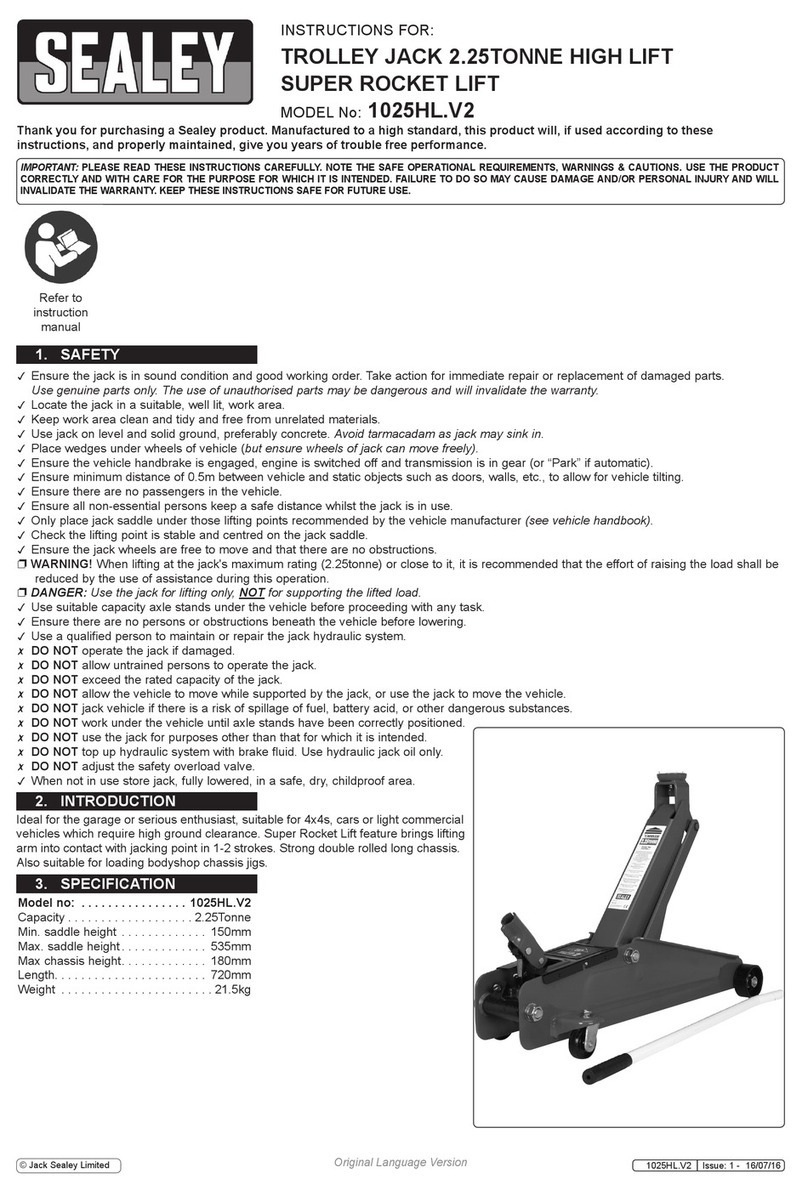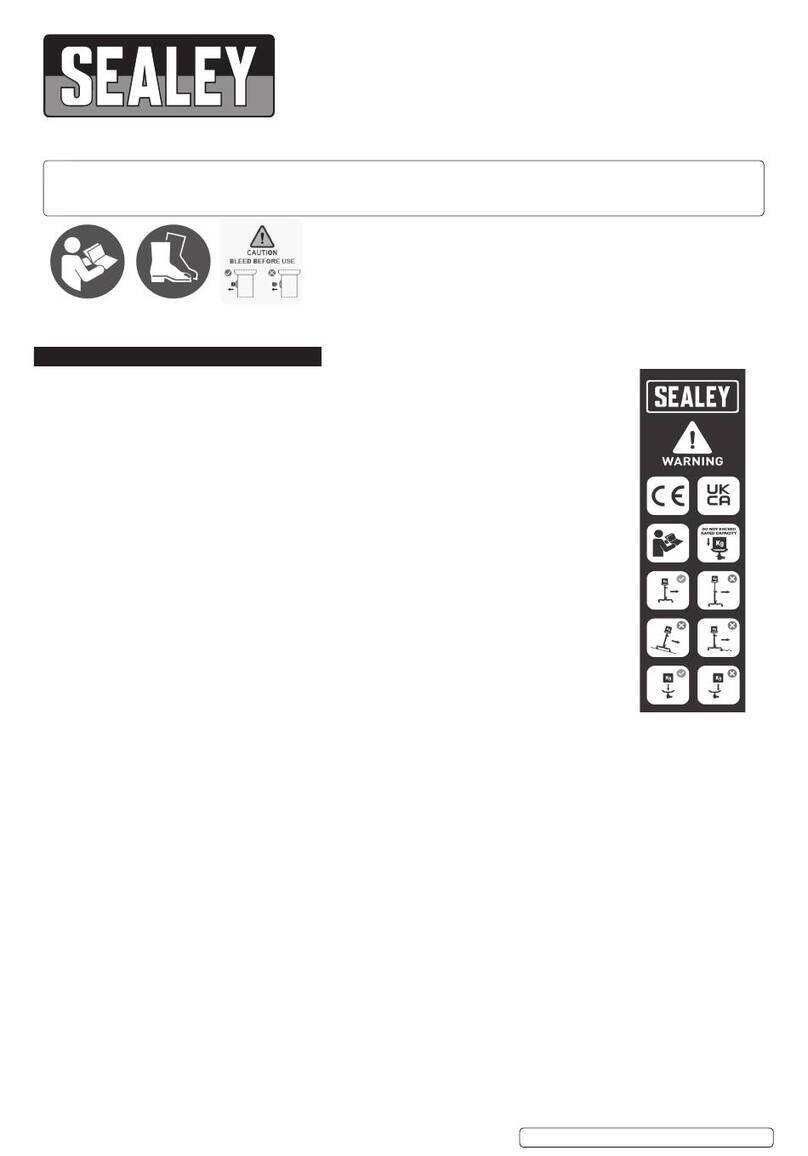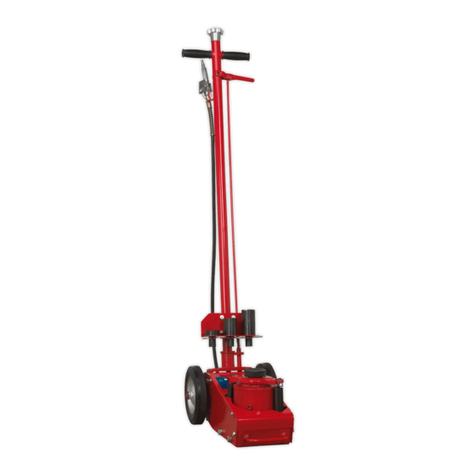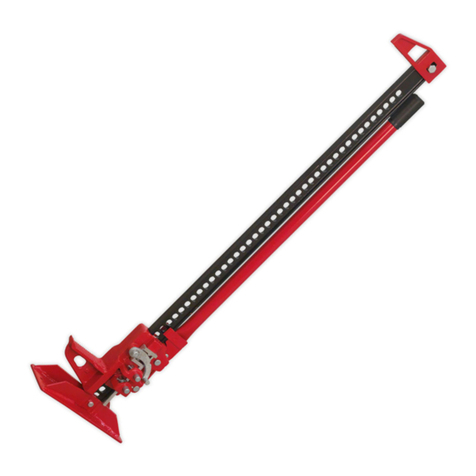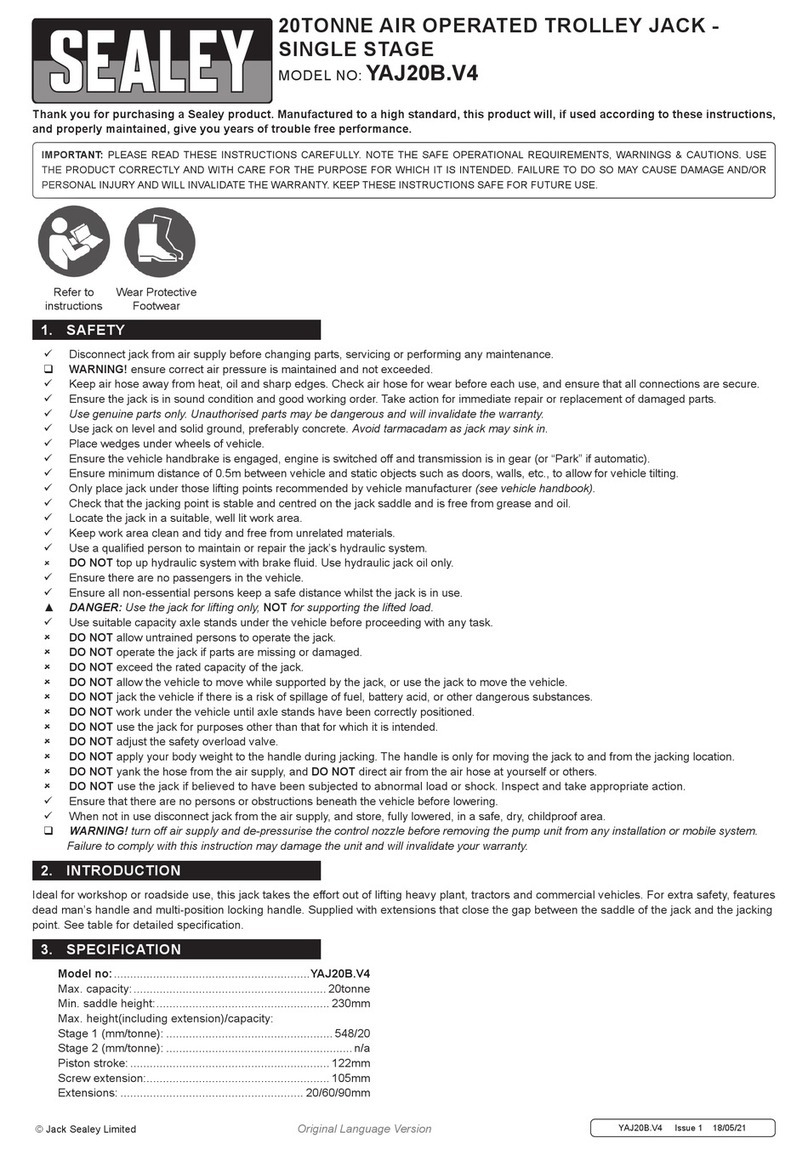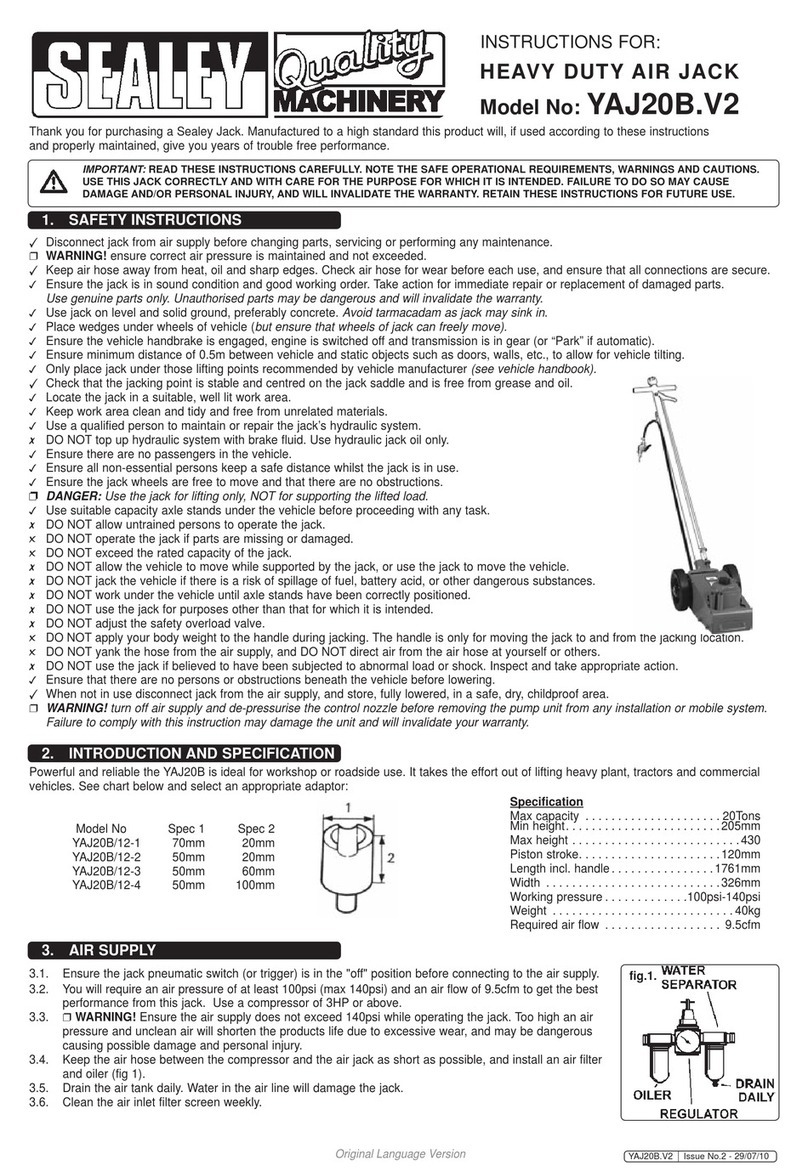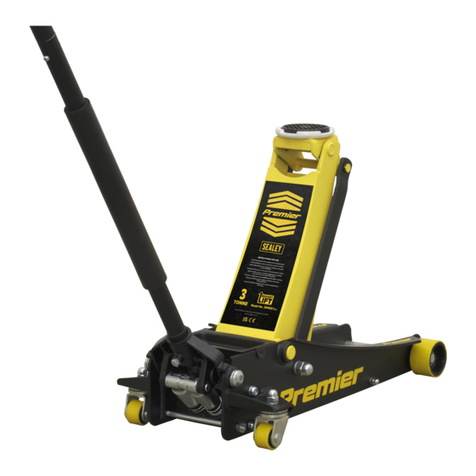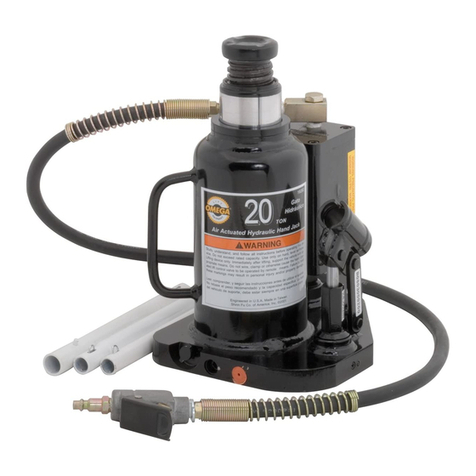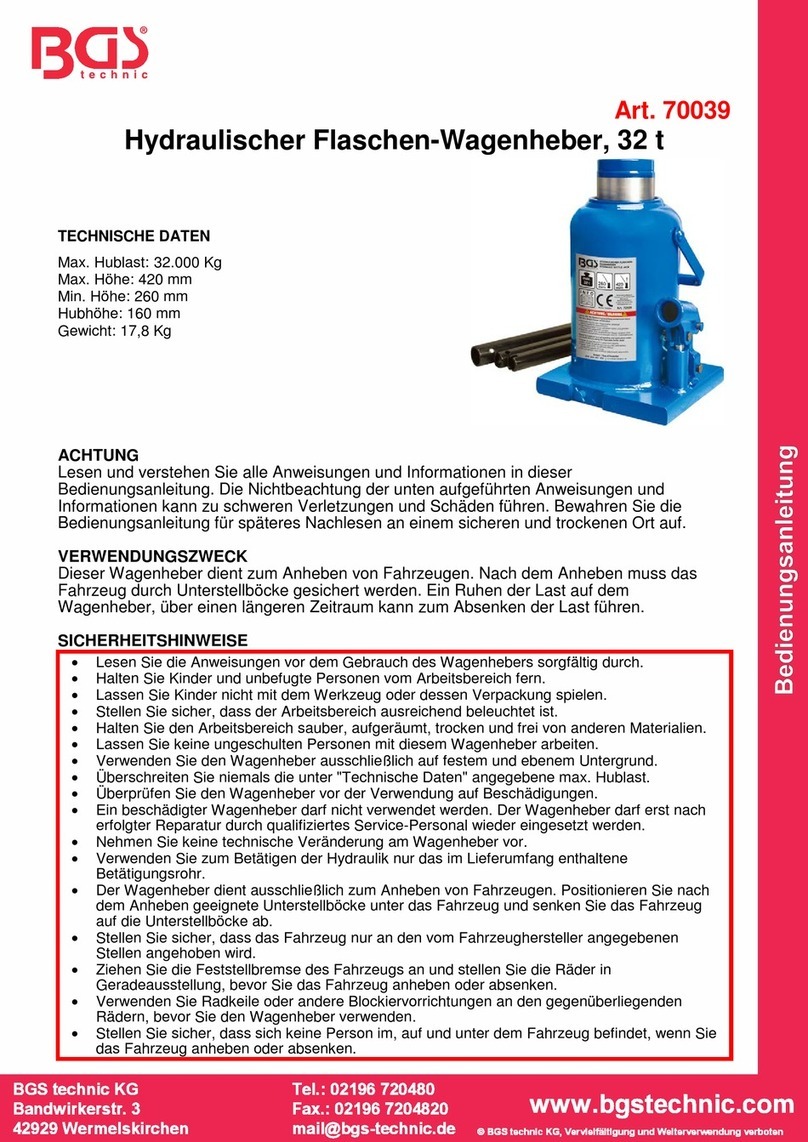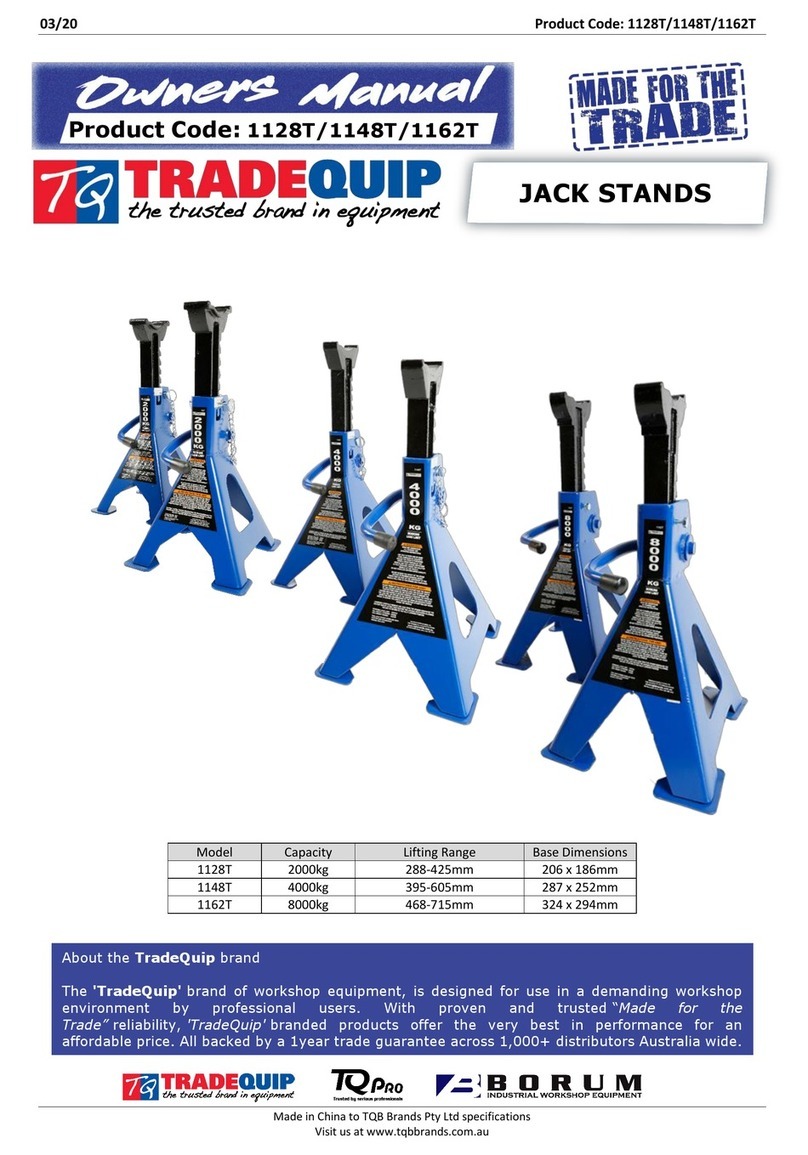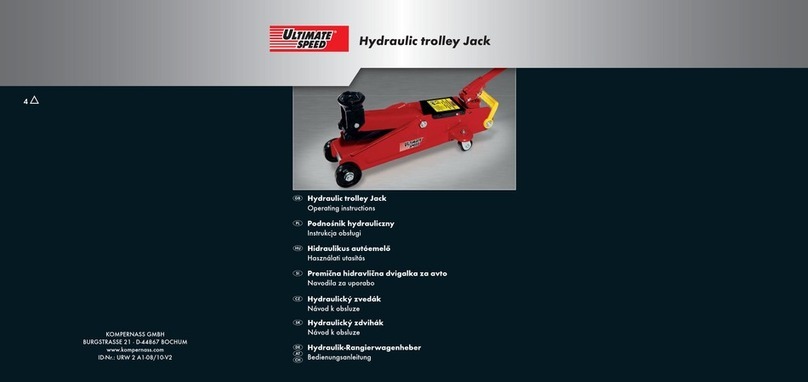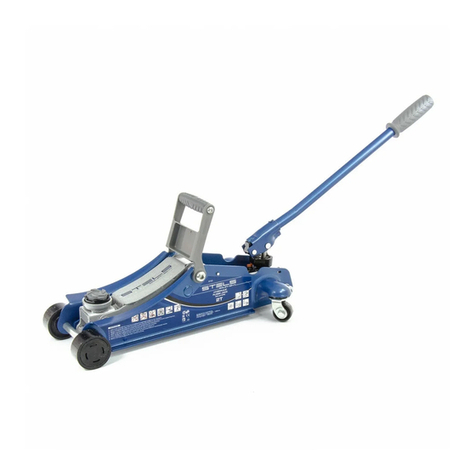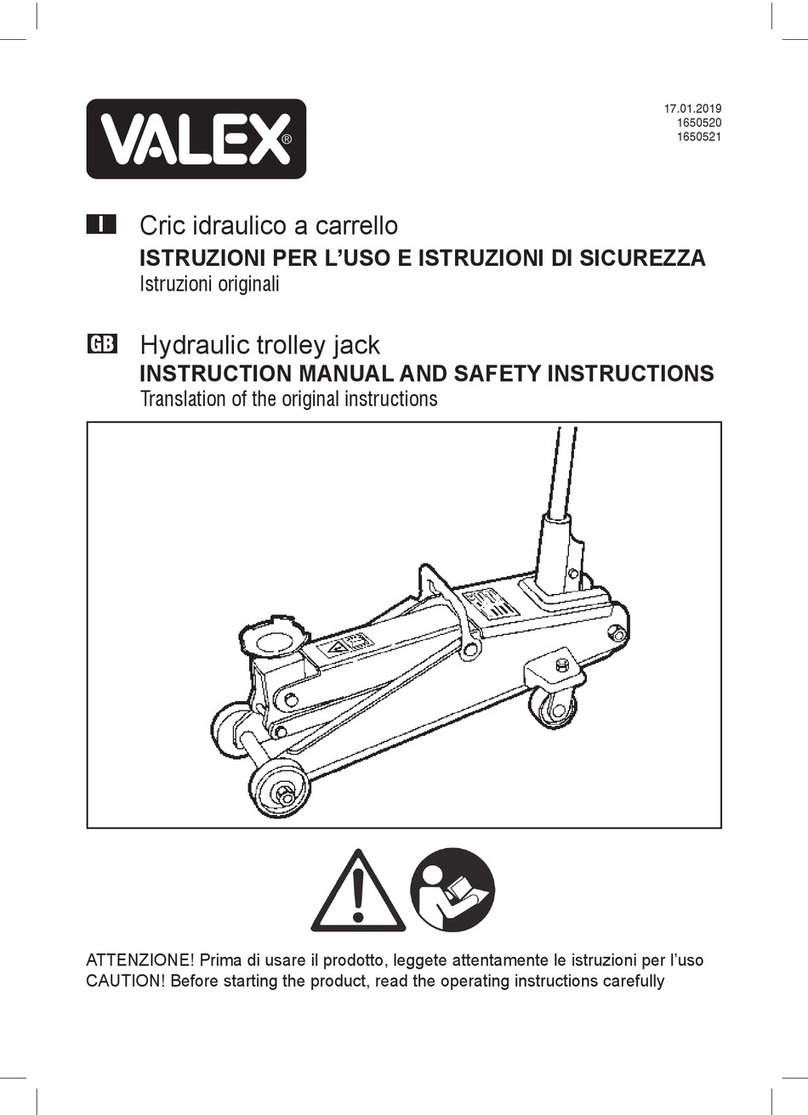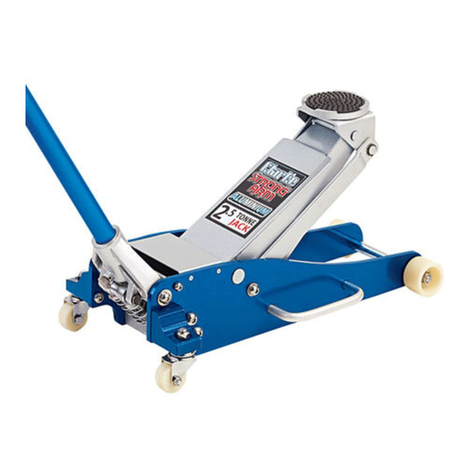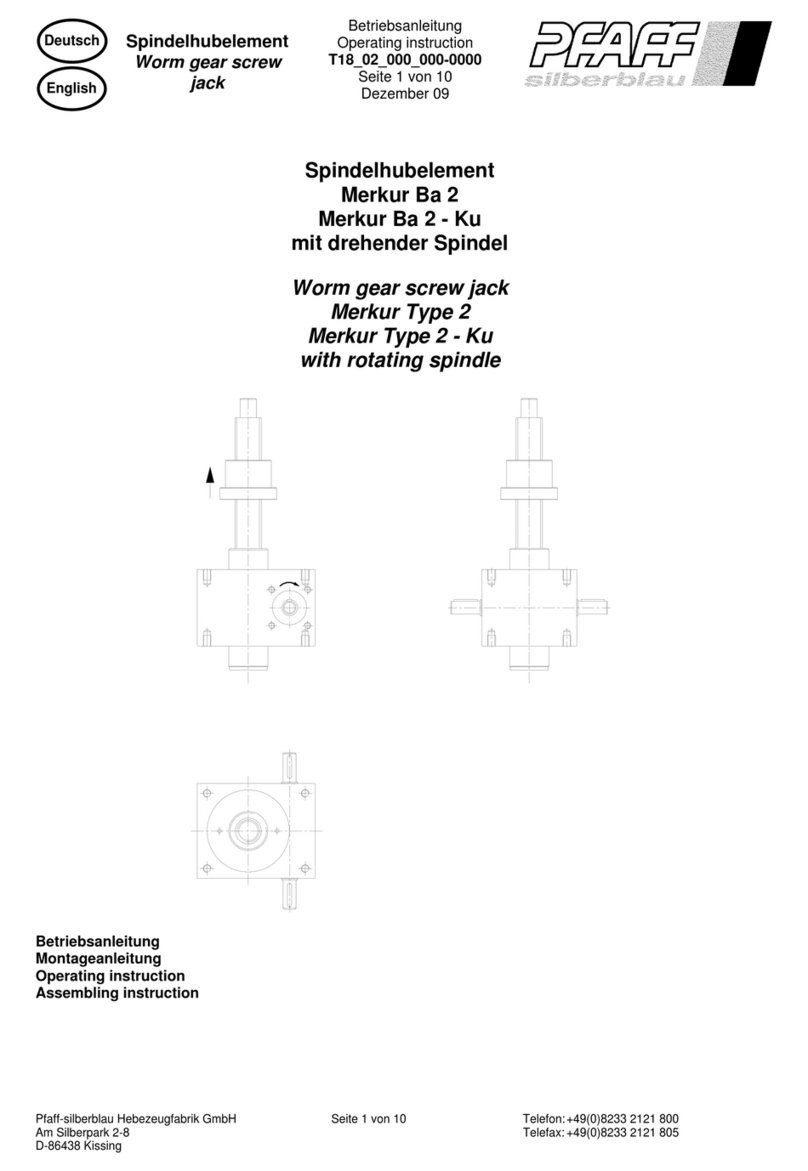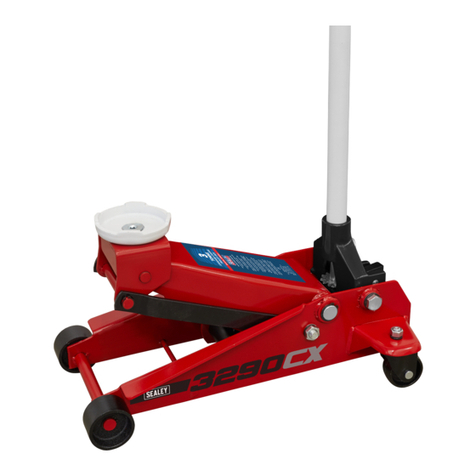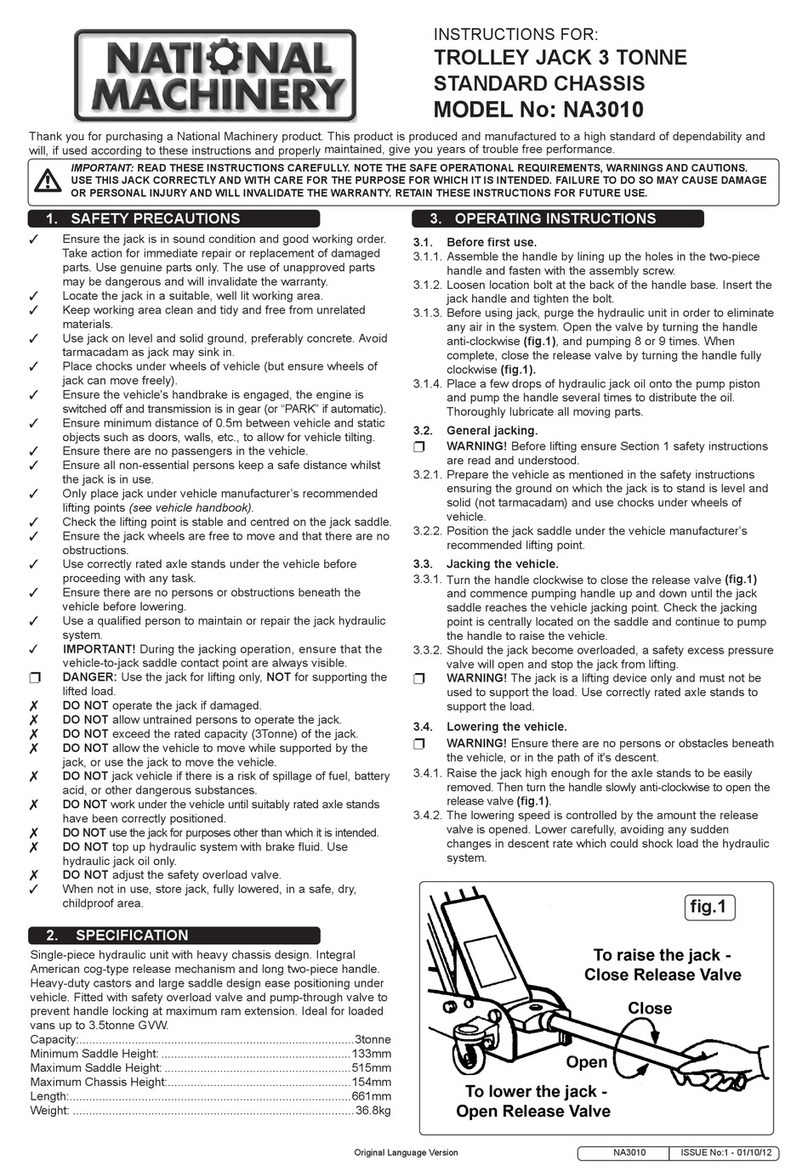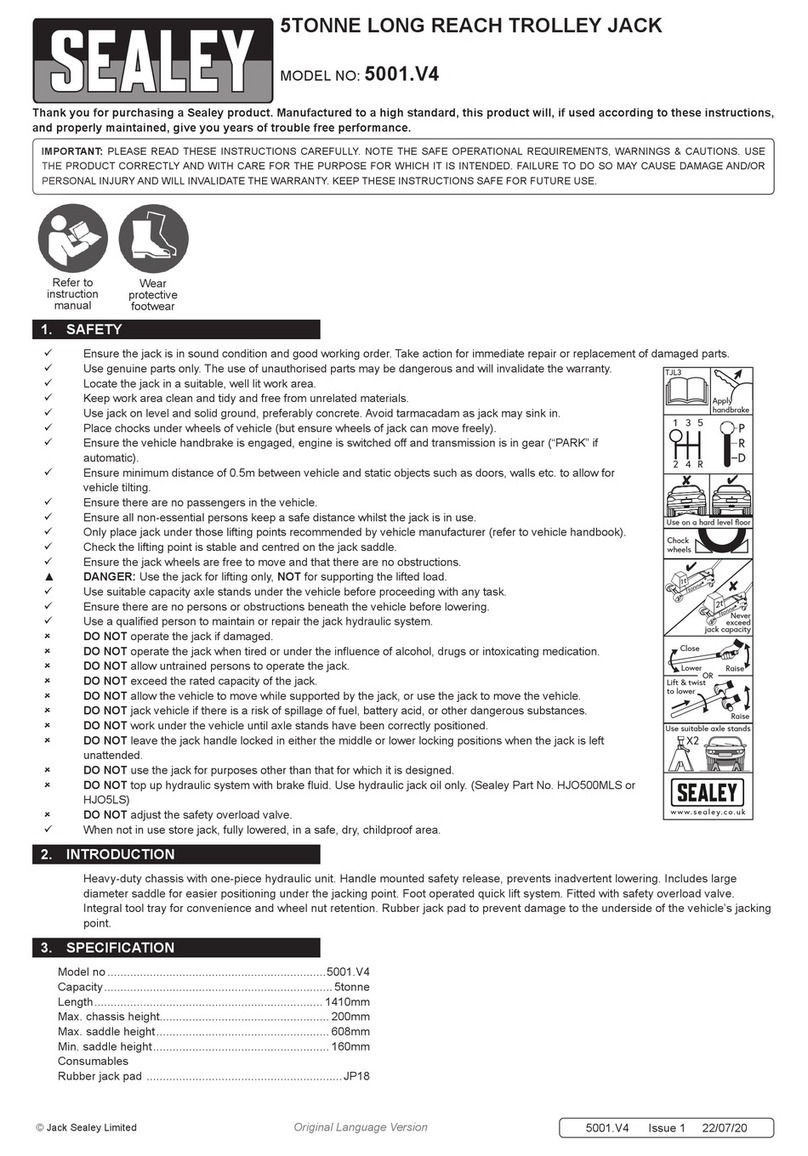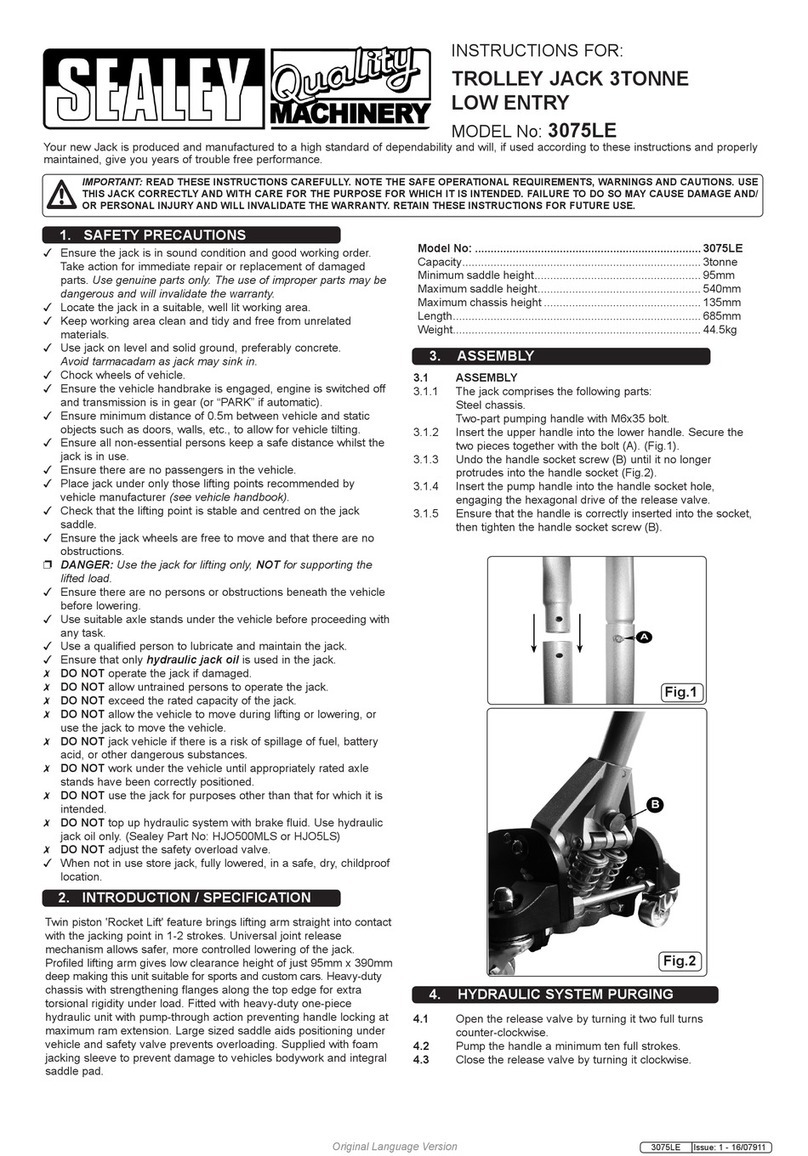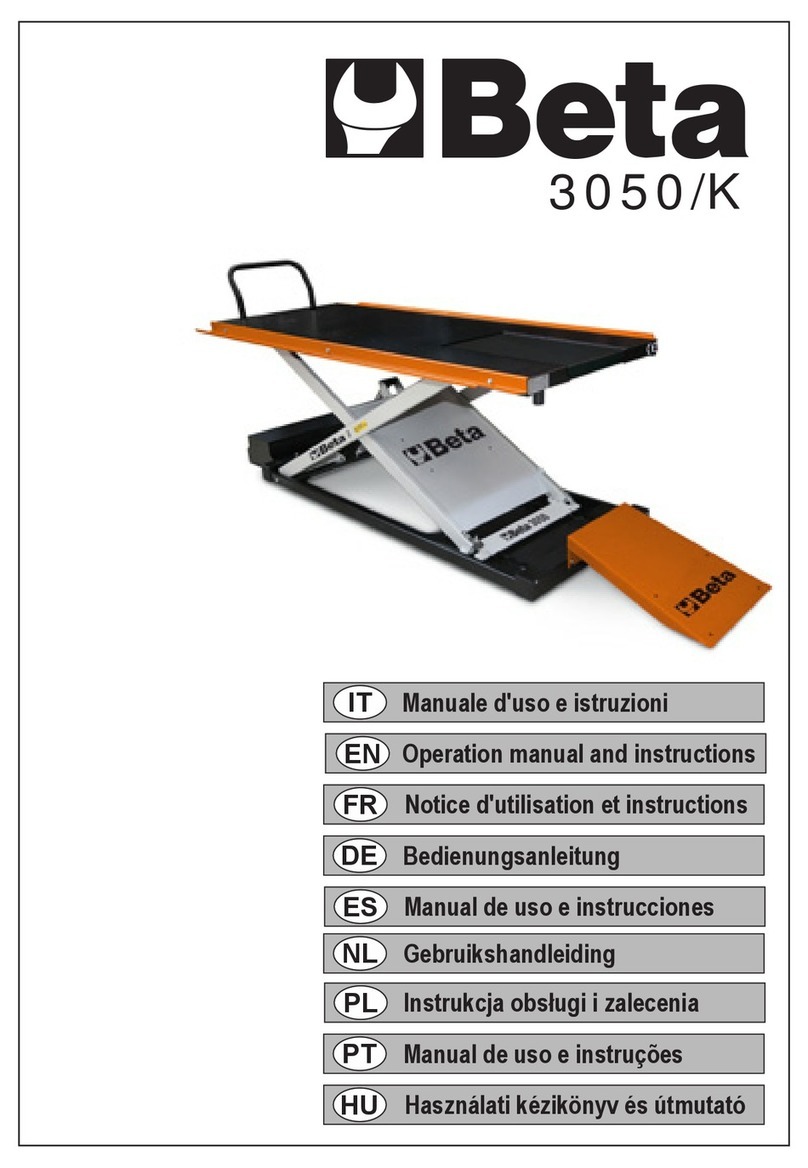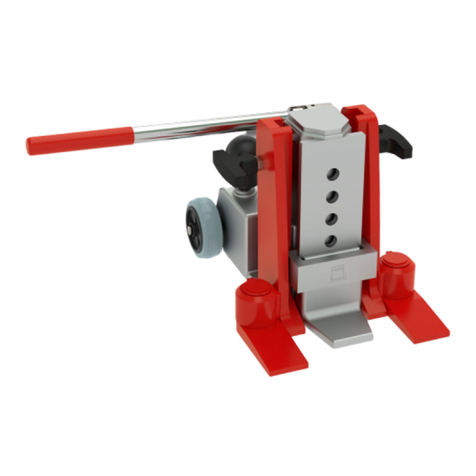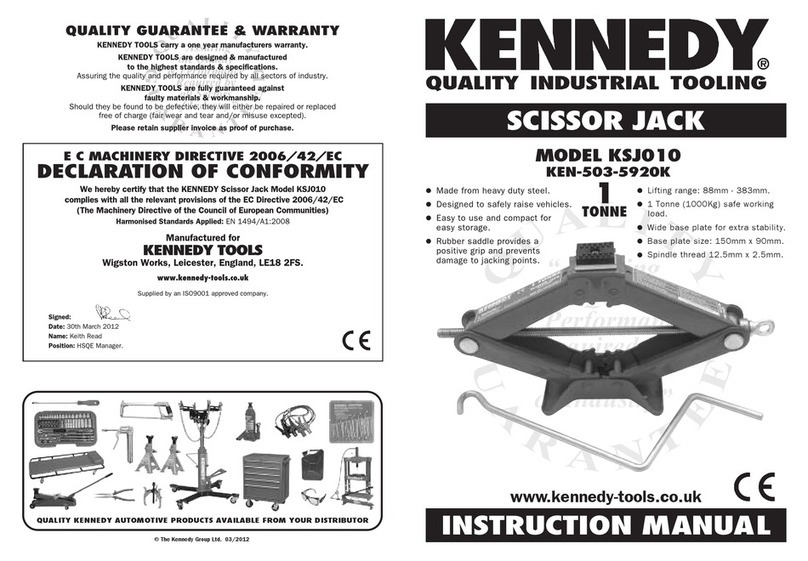
IMPORTANT: Only fully qualified personnel should attempt maintenance or repair.
5.1. When the jack is not in use, the ram should be in its lowest position to minimise corrosion. Remove the handle to inactivate jack.
5.2. Keep the jack clean and lubricate all moving parts with acid free oil on a regular basis.
5.3. To check the oil level, fully lower the jack. Remove filler plug. The correct oil level should be approximately 5mm below the filler
opening. If oil level is low, fill as required, then pump unloaded Jack 8 or 9 times to expel air and refit the oil fill plug.
NOTE: Use a good quality jack oil, such as SEALEY HYDRAULIC JACK OIL. (Sealey Part No: HJO500MLS or HJO5LS)
WARNING: DO NOT use brake fluid, or any fluid other than hydraulic jack fluid as this may cause serious damage to the jack
and will invalidate the warranty!
5.4. Before each use check for broken, cracked, bent, or loose parts, or any visible damage to welds, ram, pump, saddle, lifting arm,
frame and all parts including nuts, bolts, pins and other fasteners. If any suspect item is found remove jack from service and take
necessary action to remedy the problem. DO NOT use the jack if believed to have been subjected to abnormal load or shock.
Inspect and take appropriate action.
5.5. Every three months remove the locking rings on the castor wheels and lubricate the ball bearings with grease.
5.6. After a year of extensive use, the oil should be replaced in order to extend the life of your equipment. To drain the oil, lay the jack on its
side, remove the oil filler cap and allow to drain into a suitable container. Make sure that no dirt is allowed to enter the hydraulic
system. See 5.3. for refill instructions.
5.7. Periodically check the pump piston and piston rod for signs of corrosion. Clean exposed areas with a clean oiled cloth.
IMPORTANT: NO RESPONSIBILITY IS ACCEPTED FOR INCORRECT USE OF THE MACHINE.
Hydraulic products are only repaired by local service agents. We have service/repair agents in all parts of the UK.
DO NOT RETURN JACKS TO US. Please telephone us on 01284 757500 to obtain the address and telephone number of your local
agent. If Jack is under guarantee please contact your dealer.
De-commissioning the Jack
Should the jack become completely unserviceable and require disposal, draw off the oil into an approved container and dispose of
the jack and the oil according to local regulations.
5. MAINTENANCE
6. TROUBLE SHOOTING
PROBLEM POSSIBLE CAUSE REMEDY
Jack will not lift
the load
Jack does not lift
high enough or
feels “spongy”
Jack lifts poorly
Jack lifts but will
not hold load
Jack will not
lower completely
Jack does not
lower at all
1) Be sure to use jack with adequate capacity
2) Top up oil level
3) Check and close release valve
4) Open release valve and air vent (if fitted) and pump the handle a few times. Close valve and re-try
5) Clean and replace oil
6) Replace packing
1) Fill or remove excess oil
2) Return jack to local service agent
3) Open release valve and air vent (if fitted) and pump the handle a few times. Close valve and re-try
4) Check and close release valve
1) Replace packing and/or clean valves
2) Replace oil
3) Open release valve and air vent (if fitted) and pump the handle a few times. Close valve and re-try
1) Check and close release valve
2) Lower jack, close release valve. Place foot on front wheel and pull up lifting arm to it’s full
height by hand. Open the release valve to lower arm
3) Open release valve and air vent (if fitted) and pump the handle a few times. Close valve and re-try
4) Replace packing or contact local service agent
5) Replace packing
1) Oil all external moving parts
2) Replace rod or contact local service agent
3) Replace damaged parts or contact local service agent
4) Open release valve and air vent (if fitted) and pump the handle a few times. Close valve and re-try
5) Check and fully open release valve
6) Replace spring or contact local service agent
1) Check and fully open release valve
1) Overloaded
2) Oil level low
3) Release valve not correctly closed
4) Air in system
5) Piston rod not functioning
6) Packing worn or defective
1) Oil level too high or too low
2) Worn seals
3) Air in system
4) Release valve not closed
1) Pump packing or valves
malfunctioning
2) Oil is dirty
3) Air in the system
1) Release valve partially open
2) Dirt on valve seats
3) Air in system
4) Faulty seals
5) Packing worn or defective
1) Unit requires lubrication
2) Piston rod bent or damaged
3) Jack frame/link system distorted
due to overloading/poor positioning
4) Air in system
5) Release valve partially open
6) Jack spring damaged
1) Release valve still closed
4.4. Lowering the vehicle
SAFETY WARNING! Always lower in a slow and controlled manner and ensure there are no persons or obstacles beneath the vehicle,
or in the path of its descent.
4.4.1. Turn the handle very slowly anti-clockwise to open the valve.
4.4.2. The lowering speed is controlled by the amount the handle is turned. Lower carefully and avoid any sudden release.
NOTE: It is our policy to continually improve products and as such we reserve the right to alter data, specifications and component parts without prior notice.
IMPORTANT: No liability is accepted for incorrect use of this product.
WARRANTY: Guarantee is 12 months from purchase date, proof of which will be required for any claim.
INFORMATION: For a copy of our latest catalogue and promotions call us on 01284 757525 and leave your full name and address, including postcode.
01284 757500
01284 703534
sales@sealey.co.uk
Sole UK Distributor, Sealey Group,
Kempson Way, Suffolk Business Park,
Bury St. Edmunds, Suffolk,
IP32 7AR
www.sealey.co.uk
Web
email
Original Language Version 3200CXQP Issue: 1 - 09/09/11
Parts support is available for this product. To obtain a parts listing and/or diagram, please log on to
www.sealey.co.uk, email sales@sealey.co.uk or phone 01284 757500.
